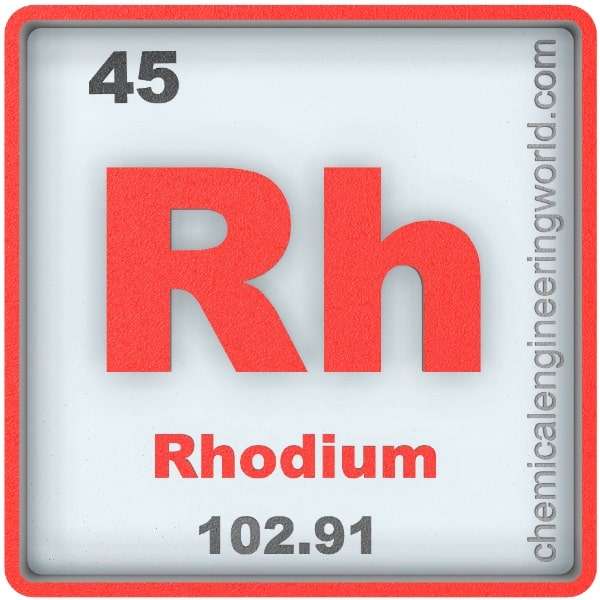Rhodium Element Properties and Information

Rhodium Element Properties and Information
Rhodium is forty-fifth element on the periodic table. Elements are arranged in the periodic table on the basis of the atomic number. Atomic number is the number of protons in the nucleus of the atom. Rhodium has an atomic number of 45. It is located in the Group 9 and Period 5 of the periodic table of elements. It is denoted by Rh. The name is derived from Greek word ‘Rhodon’ meaning Rose Coloured.
William Wollaston discovered Rhodium in 1803 while trying to make pure platinum for sales purposes in a commercial venture.
Rhodium is the rarest element among all non-radioactive elements. It is always obtained in combined form. It is mostly obtained in platinum ores.
Physical Properties
- Rhodium is a silvery, hard, and durable metal.
- The atomic mass of rhodium is 102.91
- The melting point of rhodium is 1970°C
- The boiling point of rhodium is 3727°C
- The density of rhodium is 12400 in S.I. units at 20°C
- Rhodium has only one naturally occurring isotope; Rhodium-103.
Chemical Properties
- Rhodium metal does not normally form an oxide.
- Rhodium is not attacked by most acids, it is completely insoluble in nitric acid and only slightly soluble in aqua-regia.
- The most common oxidation state that Rhodium compounds assume is +3.
Methods of Production
- Electrolysis: Rhodium is produced in a similar fashion like ruthenium. It is obtained as a by-product when cooper or nickel or platinum ores are subjected to electrolysis. The rhodium obtained is very less but large amount of nickel production makes its recovery cost effective.
- Fission by-product: Rhodium and other platinum group elements are produced as fission product of uranium-235. It requires a long cooling storage period. Thus it is unattractive for commercialization.
Relevance in Chemical and Related Industries
Catalyst: Rhodium is actively used as a catalyst for number of industrial processes. It is used for reduction of nitrogen oxide, carbonylation of methanol, reduction of benzene, manufacturer of silicone rubbers.
Relevance in Other Industries
- Jewelry: Rhodium is electroplated in Jewelries on white gold and platinum to give it a reflective coating. This is called jewelry flashing.
- Nuclear reactors: Rhodium neutron detectors are used to measure neutron flux level.
Health Effects on Exposure
Toxic: Contact of rhodium compounds act as toxins and are carcinogenic.
Effects on Surroundings
- Flammable: Dust may accumulate and form mixture with air which is flammable. If it reacts with oxygen difluoride then fire hazard occurs.
References:
https://en.m.wikipedia.org/wiki/Rhodium
































